El clima: Nuestro mapa de transmisión, basado en las métricas originales de los CDC, muestra cuán altos son los casos en algunas áreas, con dos nuevas categorías para 200-300 y >300 casos semanales por cada 100 000. ¡Actualmente, más del 90 por ciento de las personas viven en un área con más de 100 casos semanales por cada 100,000!
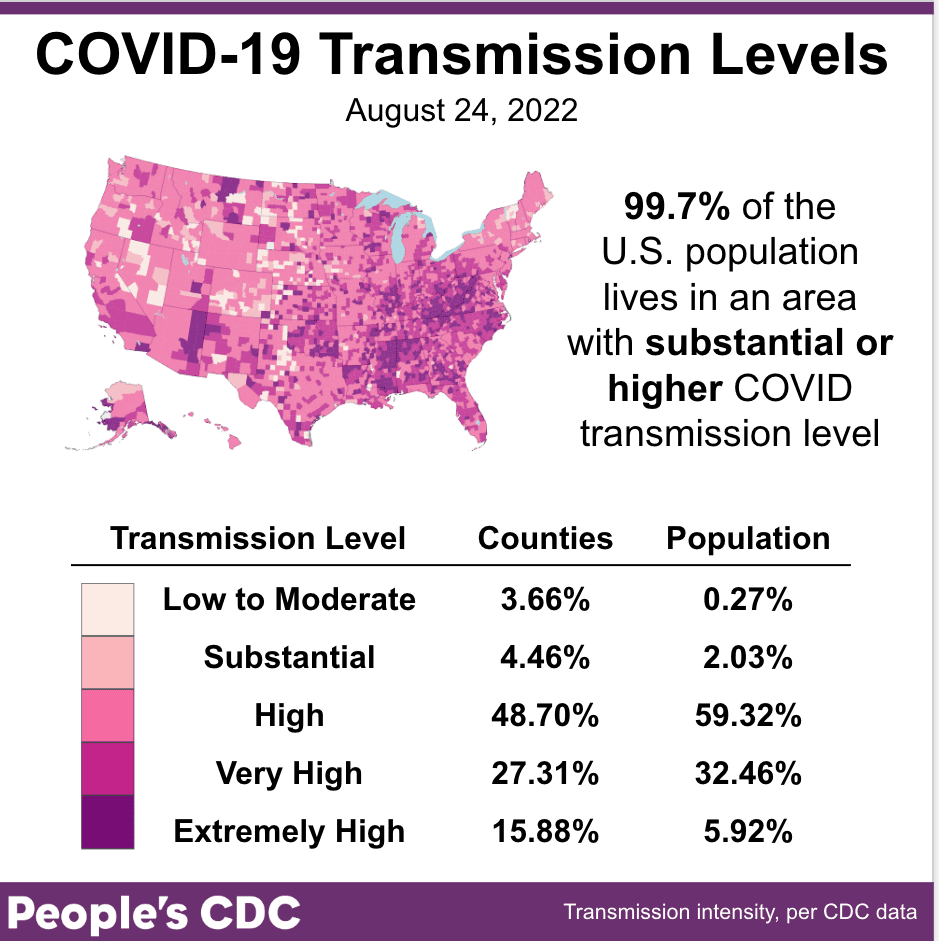
Sobre variantes: A nivel nacional, hay pocos cambios desde la semana pasada: BA5 permanece en aproximadamente 88% y BA4.6 aumentó ligeramente de 7% a 8%. Esta puede ser una pequeña pausa en un año en el que hemos visto una rotación rápida y constante de variantes.

Regionalmente, vemos alguna variación, con BA4.6 menos común en la costa oeste pero representando hasta el 15 por ciento de los casos en el centro de EE. UU. El noreste está en el medio, con BA4.6 que comprende alrededor del 9 por ciento de los casos.

Monitoreo de aguas residuales: Datos nacionales de aguas residuales muestran que el aumento de BA5 ha alcanzado su punto máximo, con la primera disminución desde marzo. Los niveles aún son altos y la duración de este aumento plantea preguntas sobre cómo es "vivir" con COVID.

Por región, datos de aguas residuales (que no se ve afectado por pruebas en el hogar no informadas o pruebas reducidas) muestran disminuciones en todas las áreas. Occidente tiene actualmente los niveles más bajos en general, con 536 copias por mililitro.
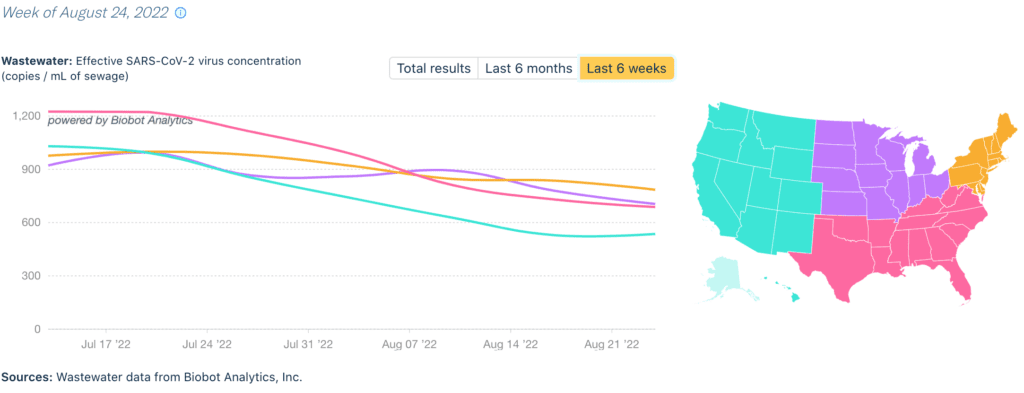
Hospitalizaciones: Mientras todavía está elevado, las hospitalizaciones también están comenzando a disminuir a medida que el aumento de BA5 se ralentiza.

Fallecidos: Del 18 al 24 de agosto, 2.729 personas han fallecido por COVID a nivel nacional. Más de 210,000 estadounidenses han muerto a causa de COVID en lo que va de 2022.
Estados Unidos es un líder mundial en muertes por COVID. Junto con el Reino Unido, tenemos la mayor cantidad de muertes por población, lo que sugiere que nuestro enfoque para controlar la pandemia no es tan exitoso como el de otros países.
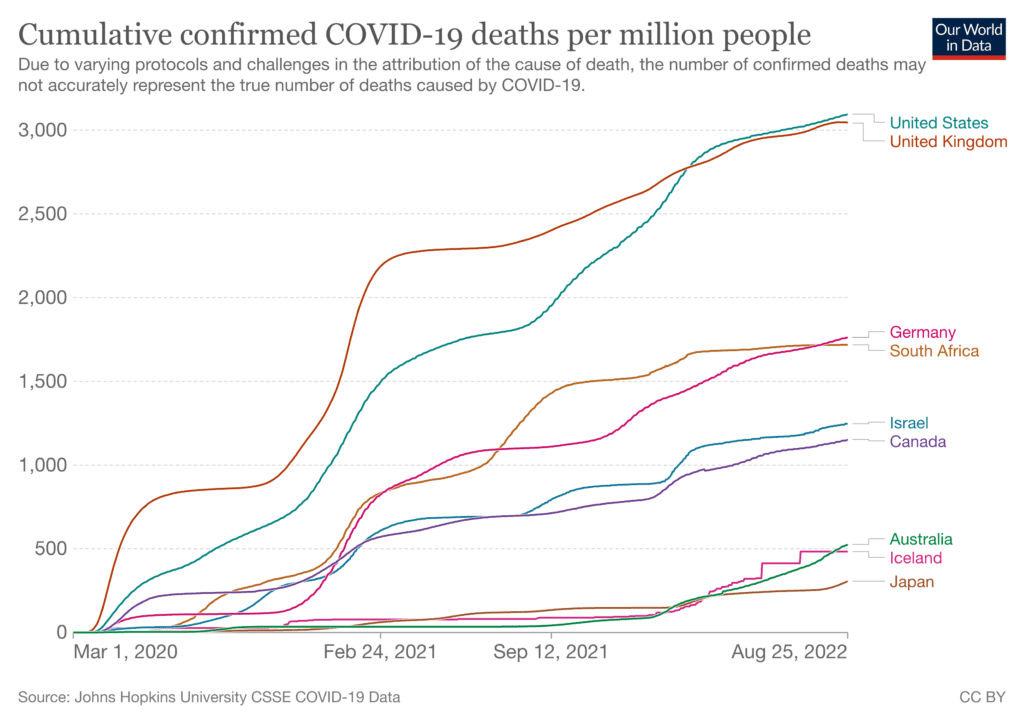
Sobre COVID largo: Los científicos están examinando la posibles funciones y tratamientos de los microcoágulos en Larga COVID (LC). Si bien las personas con COVID tienen más probabilidades de desarrollar coágulos, aún no está claro que los coágulos contribuyan a la LC.
Nuevos informes dejan claro que Long COVID está teniendo un gran impacto en la fuerza laboral. Si bien la prevención de enfermedades debe ser un objetivo en sí mismo, las empresas también deben darse cuenta de que mantener a su personal y clientes saludables es lo mejor para ellos.

Pronóstico: A medida que los estudiantes regresan a la escuela, usando capas de protección son la mejor manera de mantener las escuelas más seguras y evitar interrupciones debido a días de enfermedad. los La Academia Estadounidense de Pediatría lo tiene claro: las máscaras no interfieren en el aprendizaje de los estudiantes.

La administración decidió un enfoque de tratamiento y vacunación. Estudios muestran Paxlovid trabaja para prevenir la hospitalización y la muerte entre las personas mayores – pero sin beneficio para los menores de 65 años o sin condiciones subyacentes. ¡Necesitamos tratamientos de última generación!
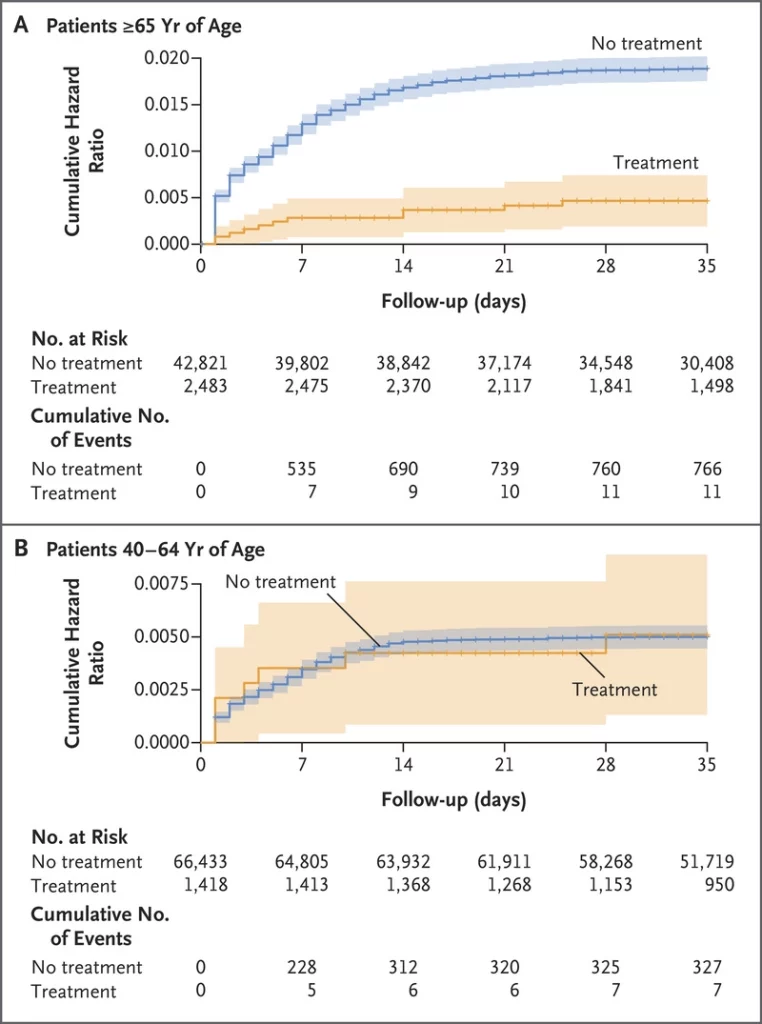
Las vacunas actualizadas, dirigidas a BA5 y la cepa original, pueden estar disponibles a partir de septiembre. Esta fantástica noticia viene con algunas preocupaciones. Los refuerzos solo estarán disponibles para personas mayores de 11 años, una vez más, dejando a los niños pequeños desprotegidos.
Nuestra infraestructura de vacunas se ha cerrado en gran medida. Necesitamos un despliegue equitativo y bien financiado de estos refuerzos.. Sin embargo, EE. UU. va a la zaga de la mayor parte del mundo en el uso de refuerzos Y puede ser un desafío motivar al público para que obtenga este refuerzo.
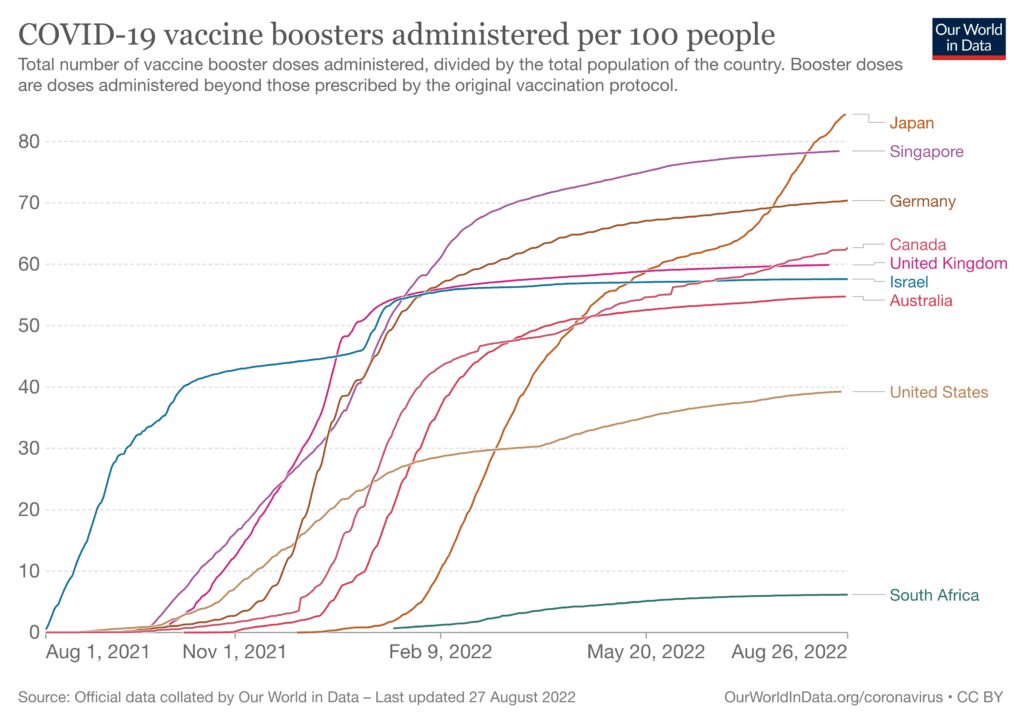
Estamos potencialmente en un punto de inflexión. Si no surgen nuevas variantes y los nuevos refuerzos bivalentes son efectivos, podemos ver una verdadera disminución en los casos.
Los datos ya sugieren que con altos niveles de vacunas, estamos viendo menos muertes, aunque todavía hay altas tasas de hospitalización, durante los aumentos repentinos.. Esto no cambia la posición del PCDC de que la prevención de infecciones en primer lugar es esencial, especialmente dadas las altas tasas de CP.
Sin embargo, no está claro qué impacto podría tener el regreso a la escuela y el típico aumento invernal. Y pueden surgir nuevas variantes en cualquier momento, otra razón para prevenir casos y reducir las posibilidades de que el virus mute.
Estar preparado: Sensible al tiempo: el gobierno planea finalizar su programa de entrega de una cantidad limitada de pruebas de COVID en el hogar gratuitas a través de USPS a partir del 2 de septiembre, según USPS. Puede verificar si debe recibir una última ronda de pruebas al visitando el sitio de prueba gratuito de USPS.
Y si parece que sus pruebas gubernamentales caducan pronto, verifique aquí para ver por cuánto tiempo son realmente buenos.
Nota de datos: en este informe, los números extraídos de los CDC estaban actualizados al 24 de agosto de 2022. Los CDC actualizan los datos con frecuencia a medida que reciben información actualizada de los estados y condados. Los números que ve hoy pueden ser ligeramente diferentes de los números de este informe.
Fuentes: ¡Revise los enlaces a lo largo y visite nuestro sitio web para obtener más información! https://peoplescdc.org